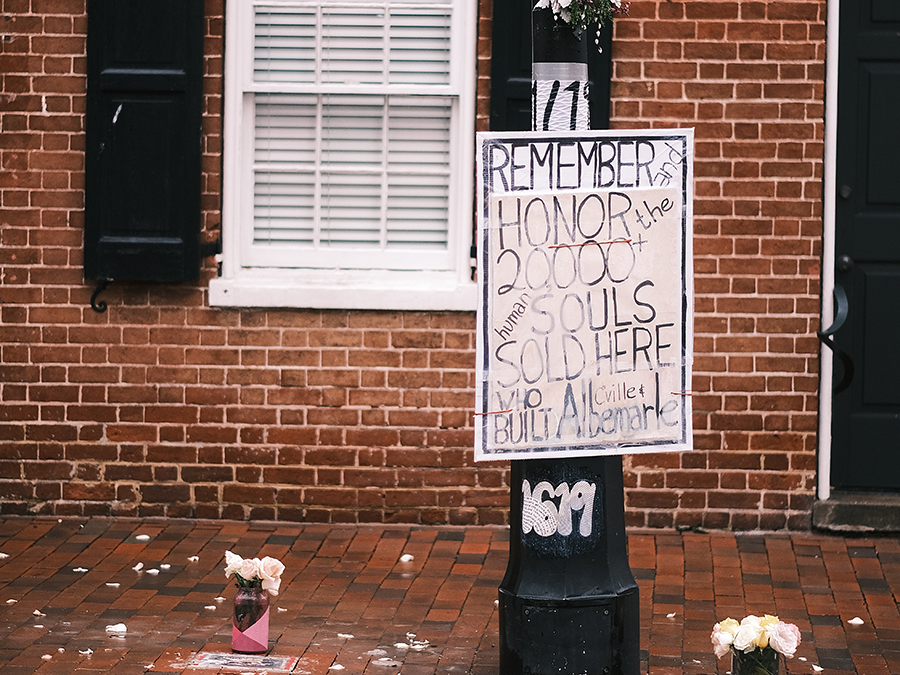It’s been over a year since 74-year-old Richard Allan hurled Charlottesville’s former slave auction marker into the James River, frustrated with the city for not creating a better tribute to the thousands of enslaved people bought and sold in Court Square. Ever since, the city has been working to replace the marker. The Historic Resources Committee maintains that installing a more permanent memorial requires collecting input from descendants of enslaved laborers. That outreach process was just beginning last spring when COVID hit, disrupting the committee’s plans.
During a March 12 virtual meeting, the committee largely discussed who should spearhead the public engagement process, which is more complex than one might think.
“It’s actually kind of a complicated thing to get appropriate public comment. I’m just wondering if we even have the kind of expertise to do that?” asked member Dede Smith. “I’m just a little concerned about doing it right, and then not putting undue burden on our two staff members.”
“We shouldn’t actually be the people doing this. We should only be setting up that structure,” echoed the committee’s vice co-chair Phil Varner. “City staff or anyone who is retained by city staff for doing this sort of public engagement should be the ones doing it.”
Jeff Werner, historic preservation and design planner, explained that city staff were not well equipped to facilitate this type of outreach, and proposed the committee instead find a facilitator with connections to descendant communities.
Member Genevieve Keller suggested the committee also tap the group of descendants they met with last March for guidance in selecting a facilitator.
During last year’s meetings, “they didn’t want just another plaque put up,” said member Jalane Schmidt. “Because they thought that then the city, us, would just lose momentum on the project, and it would remain a small plaque, as it had for years.”
Schmidt emphasized the importance of the city covering all of the community engagement costs, and compensating the facilitator fairly.
“This was already a commitment made by the city. If COVID hadn’t come along that was the plan. And there’s already a budget there for it,” she said. “Also, if we’re engaged in that process, that allows us to go to other funders [and] apply for other grants.”
They didn’t want just another plaque put up. Because they thought that then the city, us, would just lose momentum on the project, and it would remain a small plaque, as it had for years.
Jalane Schmidt, HRC Member
The slow-moving process has spurred some community members to create their own commemorations at the site. Allan, the white man who initially stole the plaque, has organized a group of residents—including descendants—for the cause, calling on the city to take action in the short term. In recent weeks, the group has held a press conference and a vigil at the spot where the plaque used to sit. They’ve also installed a temporary memorial, featuring a more thorough description of the history of Court Square than was on the original plaque. That temporary memorial was later removed by the city, says Allan.
The committee decided to begin virtual forums around May, giving the facilitator ample time to reach out to descendant groups.
“I hope when we start to meet in person we won’t do away with the virtual component, particularly with something like this with the descendants of the enslaved, because they could live all over the world now, and maybe want to have an opportunity to participate,” said Keller at the meeting.
The committee will continue to move forward with the outreach process at their next meeting in April.
